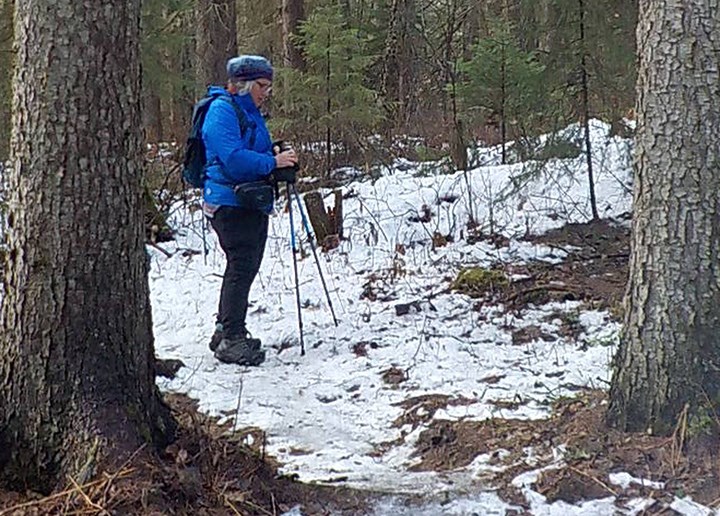Investigation findings by B.C.’s forestry watchdog avoided criticizing government or industry for beetle salvage logging practices, and missed the ‘smoke and mirrors’ math that short-changes old-growth retention targets, but were unequivocal on the need to map old growth forests and modernize biodiversity legal requirements in the Prince George timber area.
“The current legal orders create high risk to biodiversity in many ecosystems,” said BC Forest Practices Board Chair Kevin Kriese. “What we really want to see is a transparent, well-informed science-based process to go and review this (legal) Order and update it and make sure that the legal requirements meet today's expectations, and today's science.”
Registered Professional Forester Judy Thomas lodged the complaint that triggered the Board investigation four years ago. Thomas was concerned beetle salvage logging was jeopardizing biodiversity, and that logging generally wasn’t meeting provincial government legal requirements (the Order) in the Prince George Timber Supply Area (PG TSA).
In December, the Board released its investigation findings calling on the provincial government to map old growth management areas for forests of greatest risk, and modernize the 16 year-old biodiversity legal requirements via a transparent process with local communities, and in partnership with Indigenous nations.
“I was really pleased to see they said you’ve got to go back to basics, that the Order needs to be redone,” said Thomas. “They’re going deep; they’re asking for substantial change.”
At nearly eight million hectares, the PG TSA is among the largest timber supply areas in the province and one of the few without mapped legal requirements for overall old growth management, Kriese said.
“In a big part of that management unit, there's very little old growth left because it was either killed by the pine beetle, or salvaged, and now you're moving into the remaining green timber and putting those values further at risk,” Kriese said.
While acknowledging the dramatic landscape effects of salvage logging, the Board findings stopped short of pointing blame at timber company practices or government oversight, and concluded forestry companies had complied with the Order.
“The Board’s conclusion of compliance is wrong,” said Dr. Karen Price, an independent ecologist and lead author of the comprehensive scientific analysis of the province’s oldest forests, BC’s Old Growth Forest: A Last Stand for Biodiversity. “Governments have been allowing them to behave in a way that is inconsistent with the legal Order.”
The original 2004 Order stipulates old growth as older than 140 years in the dry interior forest, but a subsequent non-legal policy amendment allows licensees to include trees 120 years old to meet already too-low old growth retention targets, said Price, who called the practice ‘smoke and mirrors.’
“Compliance-wise, it looks like they’re meeting their targets,” said Price. “Ecologically, it means that we're in a much worse state than they say we are.”
Diversity retention targets are based on the amount of old growth naturally expected in an area. It’s fine if 120 years is adopted as the definition of old, said Price, as long as targets reflect the new lower age – if you want to know how many people in the room are older than 80, you don’t count everyone over 70.
Currently, old forests are listed as an inventory percentage within ecological areas, instead of being specifically mapped or protected, which the Board recommendations are intended to remedy.
Another gap lies in inadequate government oversight, said Thomas, now retired from the Ministry of Forests.
“Essentially, industry is just handing in reports and the Ministry isn’t monitoring them,” she said, estimating about one per cent of timber company’s cruise inventory reports are physically double-checked in ground surveys by Ministry staff.
Analyzing GIS data within several areas of the PG TSA, Thomas found nearly 70 per cent of spruce beetle stands harvested between 2014 and 2020 contained less than 10 per cent beetle infestation.
“There was no need to salvage it because 90 per cent was still alive,” said Thomas. “The stand was perfectly functioning.”
The forester also observed clear cuts of Pine-leading forests containing 30 per cent other species.
“They took everything,” Thomas said.
Yet, this should not be news.
Back in 2015, Prince George-Mackenzie MLA Mike Morris, the then-Parliamentary Secretary of Forests, Lands and Natural Resources, wrote about “epic losses in habitat” and dramatic ecological landscape alterations caused by beetle salvage in his forestry report, Getting the Balance Right.
Changes needed to be assessed and understood and new strategies developed to support impacted wildlife populations and habitat to allow species to recover, wrote Morris.
“My guess is, we are hemorrhaging biodiversity,” said moose ecologist and UNBC senior lab instructor Dr. Roy Rea in an interview last fall. Rea cited the 70 per cent drop in moose populations of Central B.C.
“Moose is one example, because we've been counting moose for 40 years here,” Rea said. “But who knows what is happening to all the other species not being counted.”
The problems with the PG TSA are several, said Garry Merkel, a forestry sector heavyweight and co-author, with fellow professional forester-turned-consultant Al Gorley, of the government-commissioned, independent old growth review, A New Future for Old Forests.
“The current targets are not appropriate to protect the ecosystem health and manage properly for biodiversity risk,” Merkel said.
As well, the original Order was supposed to be updated periodically and adjusted for new science, experience and knowledge.
“That just never happened,” said Merkel.
Despite repeated requests, Katrine Conroy, Minister of Forests Lands, Natural Resource Operations and Rural Development, would not comment or be interviewed on the subject. However, last fall, Premier John Horgan committed to implementing the Merkel-Gorley report recommendations, which include making ecosystem health and biodiversity a legislated, legally-binding, overarching priority across the sectors.
The Forest Practices Board has given the Province until May 30 to respond.



